More than simply adding a splash of living decor to your home, air purifying plants can actually make the air in your healthier and easier to breathe.
Houseplants add a lovely touch of living decor to any room, but did you know that many popular & easy-to-care-for houseplants also have air purifying properties?
It’s not really a secret. As far back as 1989, NASA did a study on the air purification effects of interior landscape plants. This includes removing or reducing certain indoor air pollutants such as benzene, xylene, trichloroethene, toluene, and formaldehyde.
Low-light-requiring houseplants, along with activated carbon plant filters, have demonstrated the potential for improving indoor air quality by removing trace organic pollutants from the air in energy-efficient buildings. This plant system is one of the most promising means Of alleviating the sick building syndrome associated with many new, energy efficient buildings.
INTERIOR LANDSCAPE PLANTS FOR INDOOR AIR POLLUTION ABATEMENT – NASA
These noxious chemicals can be found throughout your house, even if you don’t know they are there. They can reside in paint, furniture, your clothes, curtains, and more. Household fabric and most carpets – although lovely to look at – do a very good job of holding on these chemicals and slowly releasing them into the air.
They pollutants can have negative impacts on your health, and can even contribute to lung conditions such as asthma or worst diseases including cancer.
Although mechanical air purifiers and air filters can help reduce some of these pollutants, they are not the most attractive addition to a home’s decor scheme. And even the most expensive air purifying systems don’t always do as good a job of purifying the air as nature itself can.
That’s why one of the best, easiest, and most affordable ways to improve your air quality is to add air purifying plants to your living space.
Here are the 14 best air purifying plants for your home
This list includes some of the most powerful – and most attractive – air purifying houseplants that are commonly available.
English Ivy
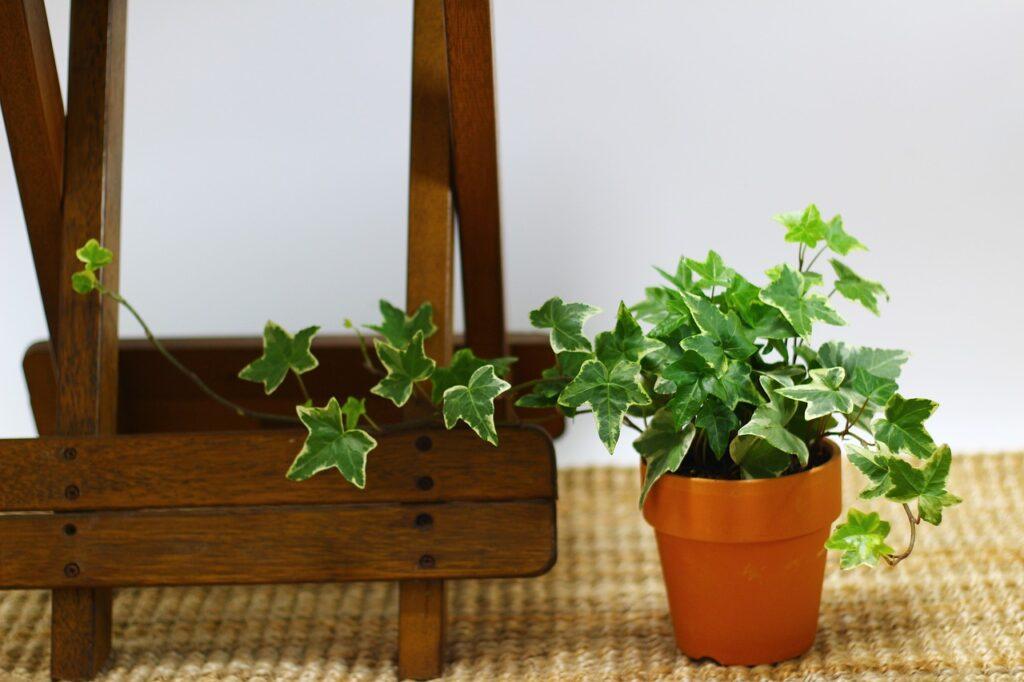
As yucky as it may be to think about, this particularly easy-to-grow vine is extremely effective at reducing airborne faecal particles. Yes, I said faecal particles. This plant’s ability to de-poopify the air makes it the perfect air purifying houseplant for the bathroom or near pet relief stations (aka kitty litter boxes).
Studies have also shown that the ivy can help reduce mold levels inside the home, which makes it a bit of a air purifying power plant.
Is English Ivy Kid & Pet safe?
Caution should be used to keep the plant out of reach of children & pets, as English Ivy can be mildly toxic if eaten.
How to grow English Ivy in your home.
Care Level: Medium – English Ivy requires generous watering and four hours of direct sunlight each day.
Lavender

Lavender has many popular benefits that makes it one of the best air purifying plant for your bedroom.
Aside from its impressive air purifying properties, which help remove some of the most common toxic chemicals from the air you breathe at night, Lavender is also widely known as a natural aromatherapy remedy for anxiety, depression, and sleep disorders.
And it’s beautiful, long-lasting purple flowers add a touch of elegance to any bedroom. Or any room in the house where you would like to be able to relax and unwind. But keep in mind, that it is the potted lavender that does the air purifying work. Cut lavender, although pretty and aromatic, loses its air purifying qualities.
Is Lavender Kid & Pet safe?
Yes, the live plant is. But the essential oils that are often derived from lavender are not.
How to grow Lavendar in your home.
Care level: Medium – Lavender likes heat, and many varieties won’t survive a cold winter. Place lavender plants where they can receive full sun for 8 hours per day, and allow the soil to dry out between watering.
Gerbera Daisies

Otherwise known as the Barberton Daisy or African Daisy, this is a staple in any Mother’s Day bouquet. But when they remain potted, Gerbera Daisies provide excellent air purification properties to your home, even when not in bloom.
They are especially well-suited at filtering out trichloroethylene, a chemical that often comes home with your dry cleaning.
Gerbera daisies are also well-known for being benzene blockers. Benzene is commonly found in inks, so writing in your journal gets a lot safer with a gerbera daisy by your side!
These bright, flowering plants, come in pink, yellow, salmon, orange, and white—adding a cheery touch to your most sacred spaces.
Are Gerbera Daisies Kid & Pet safe?
Yes, they are considered non-toxic and safe for kids and pets.
How to grow Gerbera Daisies in your home.
Care level: High – Gerbera Daises are quite susceptible to fungal diseases, therefore these pretty little flowers need a little more care than some other air purifying houseplants.
Aloe Vera

Many people are aware of the healing properties of Aloe Vera, but many don’t realize that it has substantial air purification qualities as well.
That means that not only is it great to have some on hand to soothe any kitchen burns (or sunburn), this beautiful succulent will also be hard at work purifying the air of benzene and formaldehyde, commonly found in varnishes, floor finishes, and household detergents.
This makes it the perfect purification plant for the kitchen.
Is Aloe Vera Kid & Pet safe?
Although considered a topical medicinal plant for humans, aloe vera’s level of toxicity is mild to moderate for kids, cats, and dogs – especially the outer skin of the aloe vera plant which houses most of its toxicity.
How to grow Aloe Vera in Your Home
Care Level: Easy – Aloe Vera will thrive in a sunny location where the temperature is between 55° and 80°. It should be watered once every 3 weeks, less during cooler months.
Dracaena

Dracaena is an easy to grow and beautiful tropical plant. Its sword-shaped leaves come in a dark, rich green, adding visual appeal to any room.
Not only do they remove many harmful toxins from your indoor air, they are also exceptionally easy to grow. Dracaena will thrive even when neglected as they grow in low light and require very little water. However, those with a green thumb may get to experience the elusive white flowers that the certain Dracaena varieties, such as Janet Craig, will produce ONLY under the right growing conditions.
The only thing that Dracaenas don’t like are heat and cold, so make sure you keep them away from air vents, open windows, and radiators.
Janet Craig is probably the most popular variety, but there are other Dracaenas that have similar growing conditions and air-purifying properties, including Tricolor, Masangeana, Lisa, and Marginata.
Is Dracaena Kid & Pet safe?
Although safe for humans, Dracaena can be quite toxic for cats and dogs. If your pet is known for eating plants, or you are concerned that they might start, this would not be a good choice.
How to grow Dracaena in Your Home
Care level: Very Easy – Dracaena require less water than most indoor plants. Hydrate them by misting the leaves with water and keeping the soil lightly misted but well drained.
Spider Plant
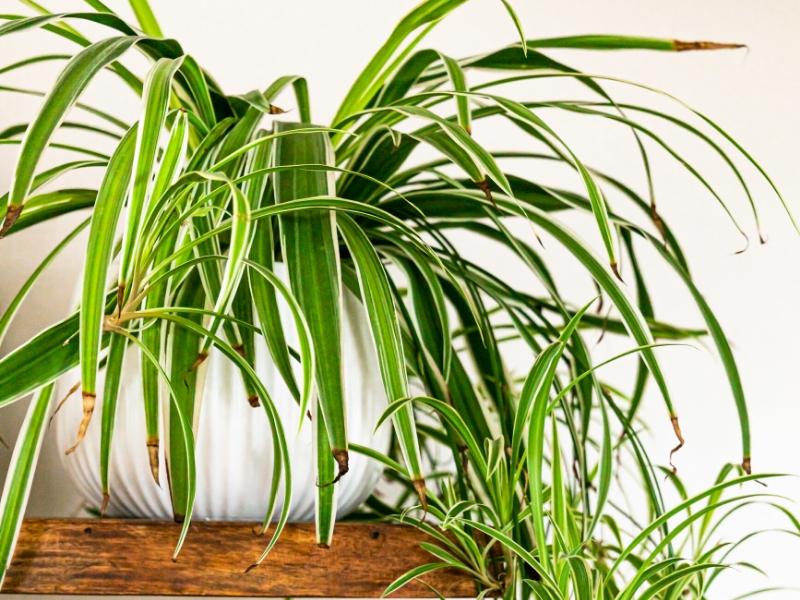
Perfect for the houseplant newbie, the spider plant is a resilient and easy to grow choice. It does an excellent job of removing carbon monoxide, xylene, and other common toxins from the air. And it is one of the few houseplants that is non-toxic to animals.
Are Spider Plants safe for kids and pets?
Spider plants are completely safe for kids and pets. However, even non-toxic plants can make pets sick if they eat too much. This is not, however, a toxic reaction.
How to grow Spider Plants in your home.
Spider plants like bright to moderate indirect sunlight and even, regular moisture. They are easily propagated, as they will spawn tiny ‘spiderettes’ that can be clipped and rooted to make an entirely new Spider plant.
Peace Lily
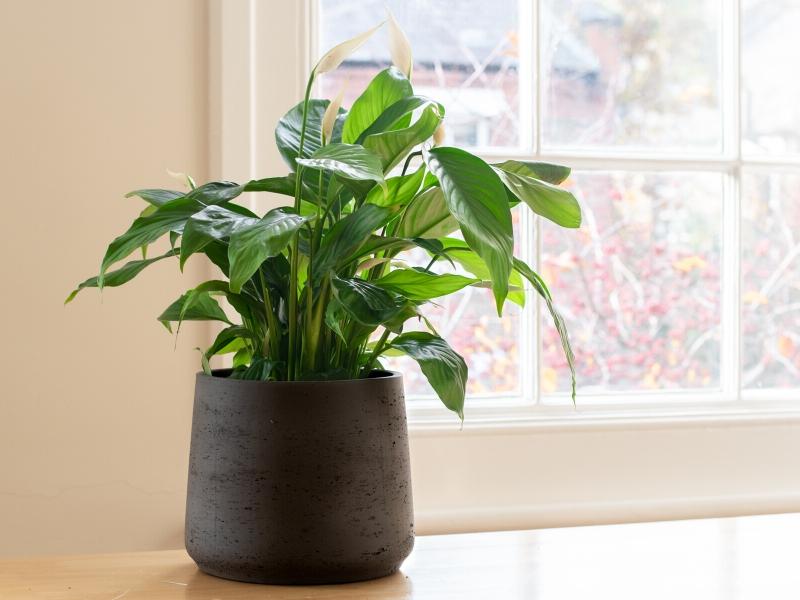
With or without their beautiful white flowers, Peace Lilies can help set the scene for the peaceful and serene bedroom landscape, or add a touch of elegance to a living room. While their blooms can last for two months or more, their rich green foliage provides an attractive accent year-round.
They are a powerful air cleaner, removing some of the most common toxins from the air inside your home.
Are Peace Lilies safe for kids and pets?
Peace Lilies are completely safe to touch, but are toxic to children and pets if eaten. Therefore, they should be kept out of reach – or out of the house entirely – if there is a danger that a pet or child might nibble on the leaves.
How to grow Peace Lilies in your home.
Care level: Easy -Peace Lilies prefer a shady spot in your home, close to but not in direct sunlight. They also perform best if you let the top layer of soil to dry out, but not enough so that they wilt. However, if they do wilt from drought, they usually bounce back quick quickly after getting some much-needed water.
Chrysanthemum

A quick and easy way to brighten up the kitchen, bathroom, den, or living room. The chrysanthemum – with its lovely blooms – can help filter out a bunch of different toxins including ammonia and benzene.
Are Chrysanthemums safe for kids and pets?
Although beautiful to look at Chrysanthemums are considered toxic to both animals and humans, so they should not be used in the house if there is a possibility that they might be eaten.
How to grow Chrysanthemums in your home.
Care level: Medium – Place Chrysanthemums prefer bright, filtered such as a near a window with light curtains. Water when the soil begins to feel dry to the touch. Because aphids are common problem with indoor mums, check the foliage regular for any signs of these tiny pests and remove them immediately.
Snake Plant
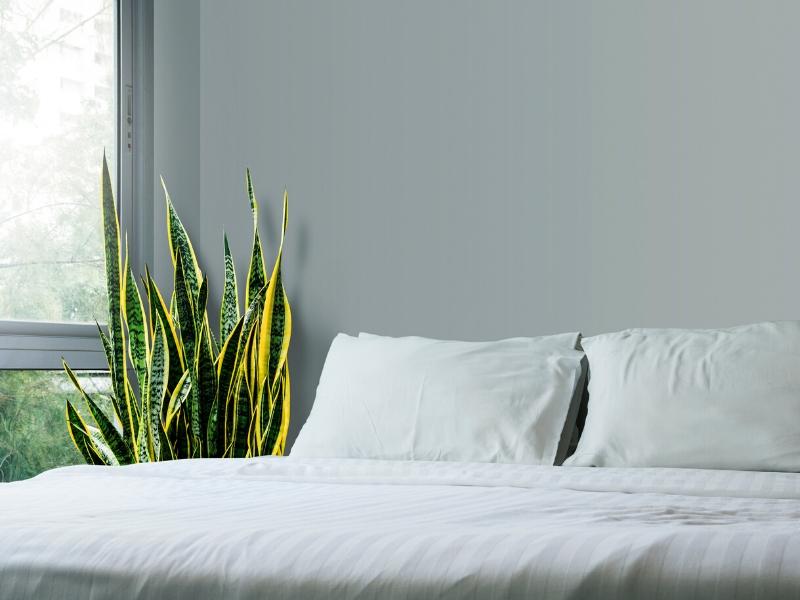
Also commonly referred to as Mother-in-Law’s Tongue – which seems like a stereotypical commentary on in-law relations – this yellow-tipped plant releases oxygen at night, helping clear the air while you sleep.
It is also one of the best air purifying plants for filtering out formaldehyde, toluene, xylene, benzene, and trichloroethylene.
It is a great choice for the bedroom, but can be used in any room in the house.
Are Snake Plants safe for kids and pets?
Snake Plants are another species of hardy houseplant that is safe for kids, but can be toxic for pets.
How to grow Snake Plants in your home.
Care level: Easy – Snake Plants are very easy to care for and can handle a variety of lighting situations. Although they prefer bright, indirect light they can tolerate either end of the spectrum from direct sunlight to shady corners of your home. However, you do have to be careful not to over-water your Snake Plant, as the roots will often rot in moist soil.
Chinese Evergreen
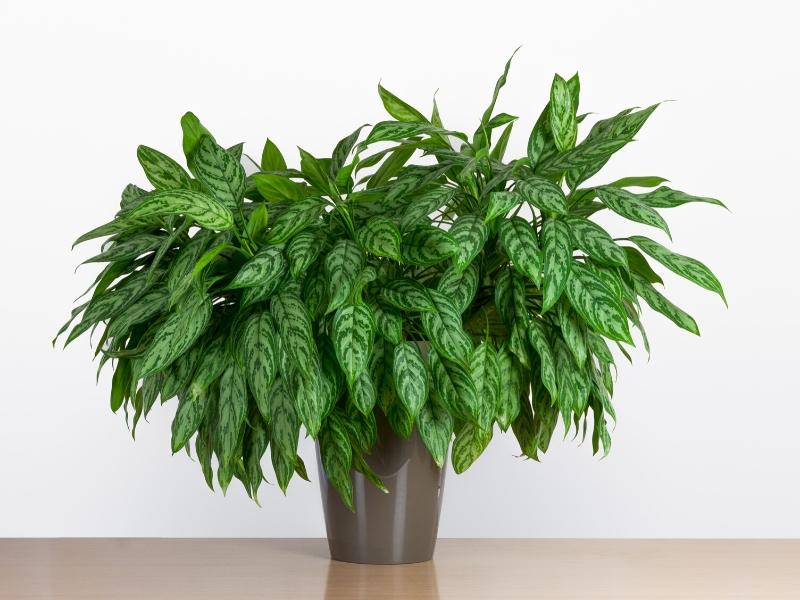
This beautiful and easy-to-grow tropical plant is known for its ability to clear the air of formaldehyde and benzene, a toxin commonly found in detergents and cosmetics.
Its lush, variegated foliage makes for a striking accent that is as attractive to look at as it is functional.
Are Chinese Evergreens safe for kids and pets?
The Chinese Evergreen is known to be toxic to children & pets. This is especially the case with the seed pod – sometimes called the nut – as it contains the greatest amount of toxin.
How to grow Chinese Evergreens in your home.
Care level: Medium – Chinese Evergreens thrive in filtered light to partial shade but do not do well in direct sunlight. They also require an evenly moist soil environment and high humidity, which could mean needing to mist the leaves regularly. This makes them a good choice for the bathroom, where the steam from showers and baths can help maintain humidity levels.
Golden Pothos
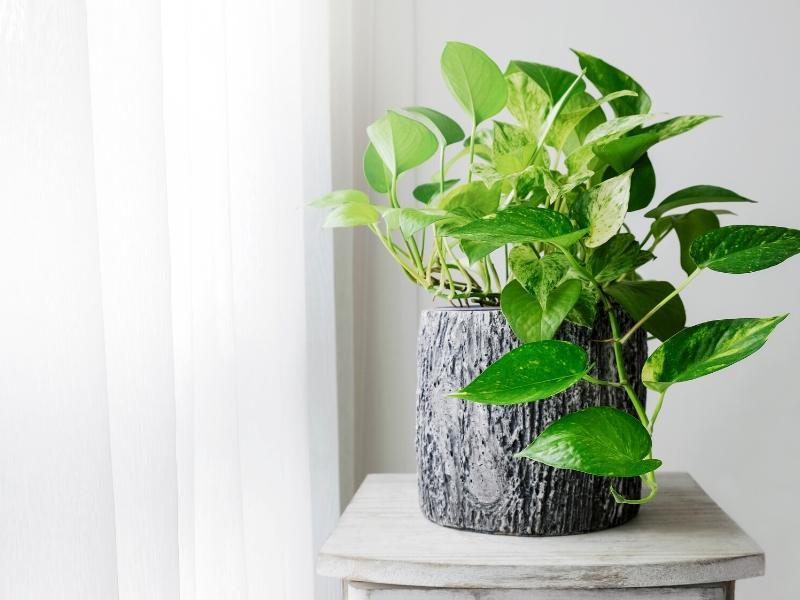
One of the easiest plants to grow – and propagate – the Golden Pothos is a power player when it comes to air purification.
The Golden Pothos likes to grow as a long vine, and can become spindly if you’re not careful. But some regular clipping can help maintain a more compact and visually appealing shape. And those clippings can be rooted in water to create more plants to provide even more air purification power.
Are Golden Pothos safe for kids and pets?
Pothos is considered to be mildly harmful in small quantities, but can produce serious toxicity side effects in animals and people if consumed in significant quantities. Therefore, care should be taken to keep it out of reach from children and pets.
How to grow Golden Pothos in your home.
Care level: Easy – Golden Pothos are hard to kill, but it is possible if you try hard enough. They prefer indirect light, but can tolerate low-light conditions. However, they will often dry out or “burn” in direct light, so that should be avoided. They also like the soil to dry out between watering, which is perfect if you can be forgetful sometimes.
Weeping Fig

A popular houseplant since Victorian times, Weeping Figs – otherwise known as Ficus – can help drastically reduce the levels of formaldehyde, xylene, and toluene in your home.
Even when grown indoors, Weeping Figs are a hardy plant that can be substantial in size, sometimes growing to 10 feet tall (if allowed to do so).
Are Weeping Figs safe for kids and pets?
Weeping Fig leaves can be toxic to pets if eaten. Since the Weeping Fig does occasionally drop leaves, it’s very important keep your pets from eating these leaves. If you are not able to do so, this is probably not the air purifying plant for you. It is safe for humans, but eating the leaves can cause stomach upset. So a Weeping Fig Leaf Salad is probably not a good plan.
How to grow Weeping Figs in your home.
Care Level: Medium – Weeping Figs are a relatively low-maintenance beauty that like bright, indirect light, and for the soil to dry out between watering. However, they are also a bit touchy and adverse to change, so avoid moving or re-potting your Weeping Fig unless you absolutely must.
Bamboo Palm

Often referred to as the Parlor Palm, the Bamboo Palm is an easy-to-grow, low-maintenance air purifier that has a high shade tolerance.
Are Bamboo Palms safe for kids and pets?
Although its waxy green may tempt your pet into some leaf consumption, you don’t have to worry. Bamboo Palm plants are non-toxic for dogs, cats, and humans.
How to grow Bamboo Palms in your home.
Care Level: Easy- Bamboo thrives in bright, filtered light but it does not like cold drafts, so keep it away from open windows and doors, especially in the winter. They are slow growing but very hardy.
Boston Fern
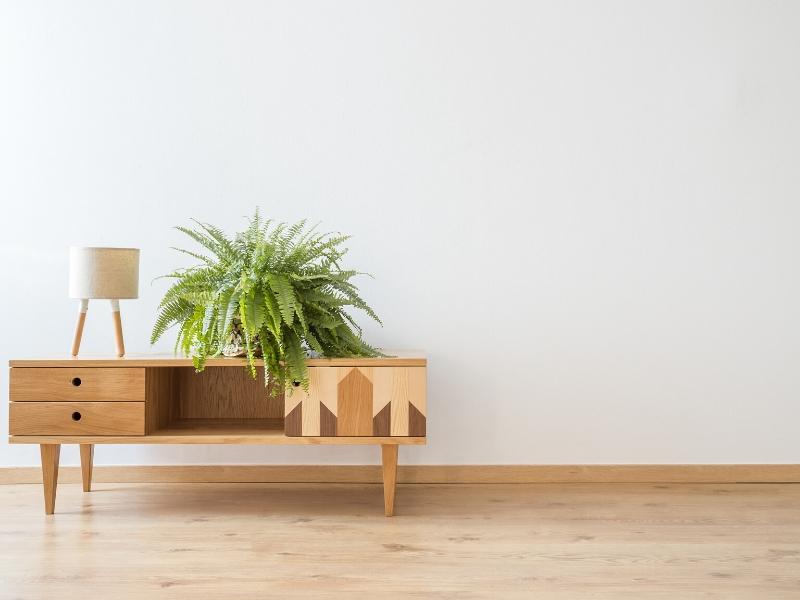
The bushy and beautiful Boston Fern likes to clean the air from a cool location with high humidity and indirect light.
Are Boston Ferns safe for kids and pets?
According to the ASPCA, Boston Ferns are non-toxic to both cats and dogs. And many people consider parts of the Boston Fern to be edible – and quite tasty – although I wouldn’t be trying that myself.
How to grow Boston Ferns in your home.
Care Level: Easy – Boston Ferns are fairly easy to grow, but do require consistent moisture. If the soil is allowed to dry out, the leaves will dry out and get crispy. And there is no coming back from a crispy fern.
Picking the Right Air Purifying Plants for the Home
When selecting the right plants for yourself and your home, there is a lot to consider.
Do you have enough of a green thumb to maintain a more challenging houseplant?
Do you have to worry about the toxicity levels for pets or children (or even really dumb teenagers)?
What artificial and natural light is available?
How often can you water the plants and will there be gaps when you are away from home for extended periods?
Which ones do you think are the most attractive?
But with the variety of air purifying plants available, it won’t be that hard to answer those questions beautifully.
To aid you in that quest, here are some of the most commonly asked questions about air purifying plants.

Air Purifying Plants FAQ
Because of its air purification and aromatherapy benefits, Lavender is one of the best plants for the bedroom. Another great options is the yellow-tipped Snake plant, which releases oxygen at night to clean the air while you sleep.
The easy-to-grow English Ivy vine is extremely effective at reducing airborne faecal particles. This plants ability to de-poopify the air makes it the perfect air purifying plant for the bathroom
The bushy and beautiful Boston Fern is completely non-toxic for cats and dogs. Bamboo Palms, Gerbera Daisies, Spider Plants, and Lavender are also rated as non-toxic for dogs and cats.
Although one could argue for many easy-to-grow varieties of houseplants, the Spider Plant & Golden Pothos are probably the easiest to maintain and propagate.
The Goldon Photos, Bamboo Palm, and Snake Plants can all tolerate low levels of light, so they are well-suited for the shadier parts of your home.
Have a question that I forgot to answer? Feel free to ask it in the comments section below!

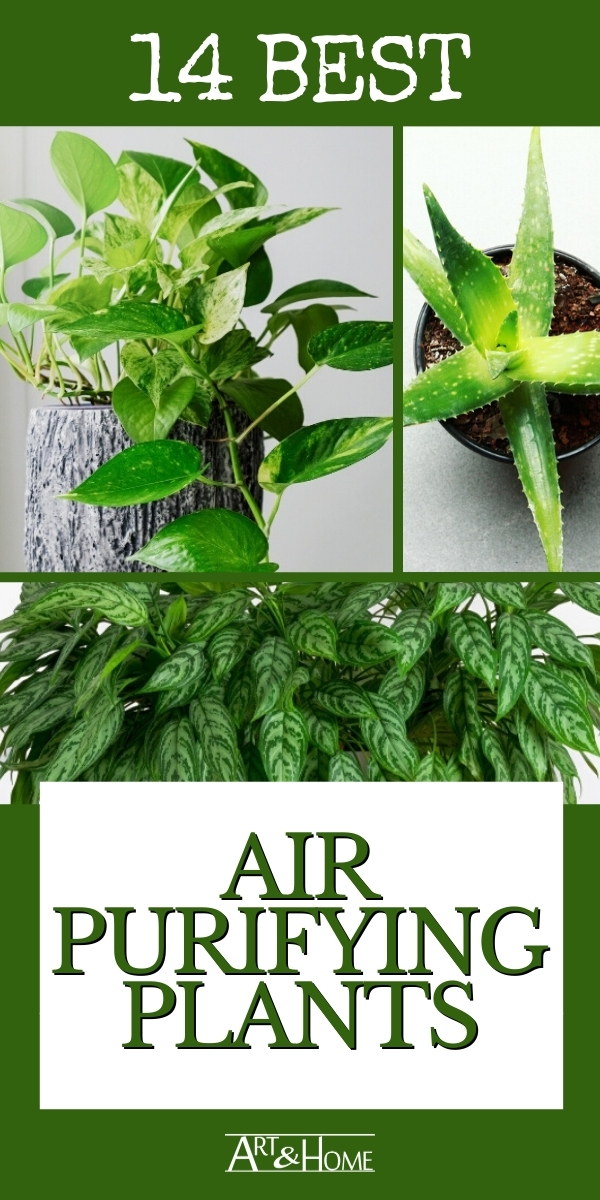

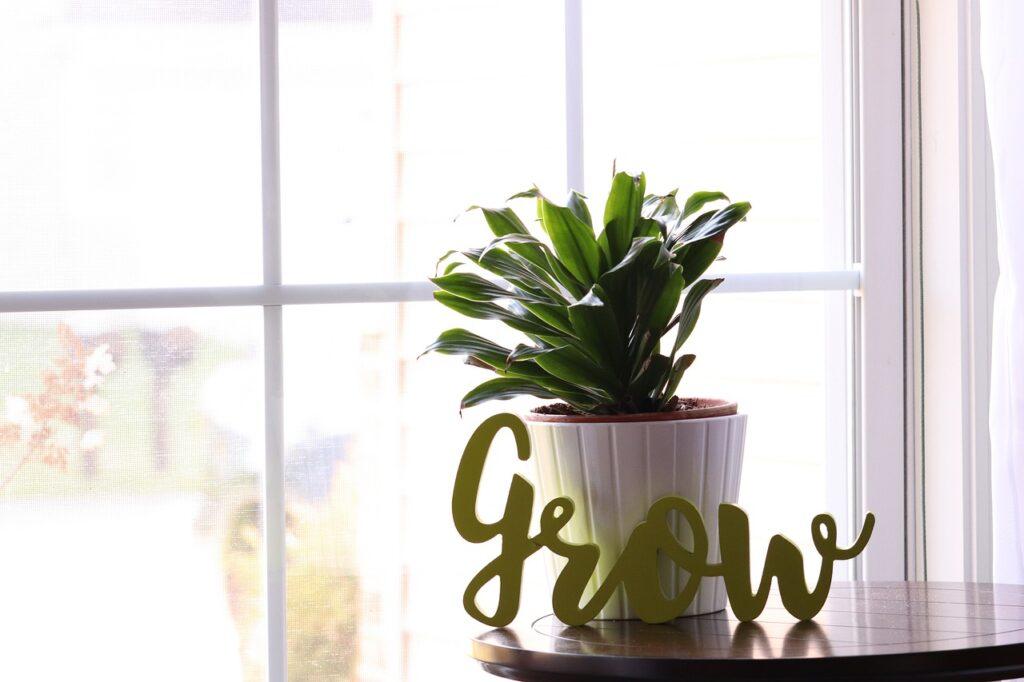
Great post. I love plants and it’s nice to learn which are beneficial. Thank you for sharing with #omhgww. I will socialize your post if buttons are provided.
Great comprehensive info ~ pinned. Good to know that I have air purifying plants in my home ~ pothos and peace lilies.
I love this post! My husband and I were just discussing adding some house plants. We currently have none. And we didn’t even consider them for air purifying purposes. I am bookmarking this post to refer to when we decide to start adding some plants. Thanks for sharing and linking up!
Shelbee